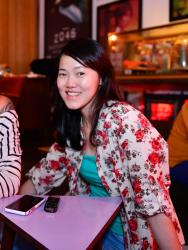1.
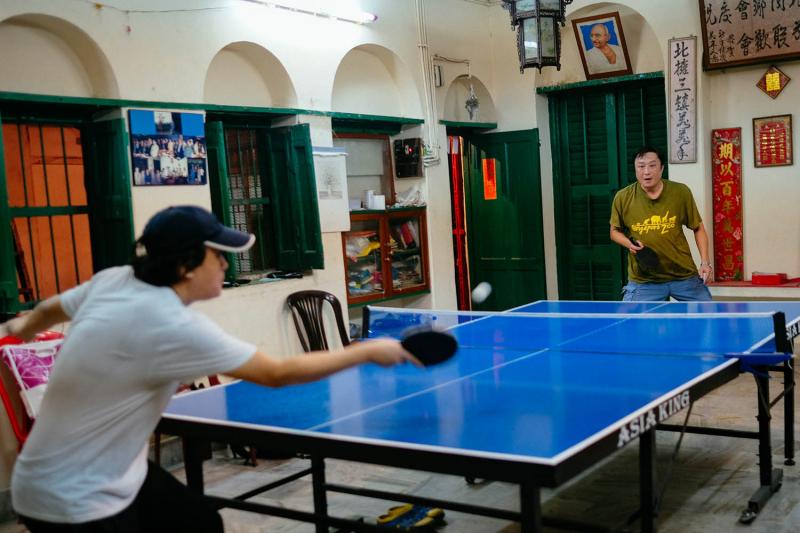
“Growing up, we could make up two cricket teams with the young guys around here. Not anymore.”
Trevor Chen sits with his brother Stephen inside Sei Vui Club in Tiretti Bazaar, Kolkata’s old Chinatown. They’re waiting for the rest of the group to show up. They used to play gully cricket outside, Trevor says, when they had more friends. But now they’re down to just the handful of them, in their thirties and forties. “Almost all bachelors,” one of their friends would say later.
So it’s boys’ night some evenings after work, and tonight, in a hall upstairs decorated with portraits of Gandhi and Sun Yat-sen, they’ll be playing ping-pong. That, they have enough manpower for.
Tiretti Bazaar is not what it used to be. “There was a time you couldn’t walk down the street without bumping into Chinese people. Those days are gone. There are more Kolkatan Chinese in Toronto today than there are in Kolkata,” says a retiree I meet at another club who sports a Toronto Maple Leafs cap.
Once the capital of the British Raj and a major trading port between Britain and China, Kolkata has always been home to the majority of India’s Chinese, who first settled here in the late eighteenth century. At one time, there were tens of thousands of them; now, there are just about three thousand—including those in the other Chinatown, Tangra, which was once dominated by thriving Chinese tanneries. Everything changed in 1962, when the Sino-Indian border war struck a rift between the local Chinese and Indians. Thousands of Chinese fled India; more emigrated in the following decades and continue to leave in pursuit of better lives.
But behind closed doors and dust-smeared windows, a resilient community continues about its daily life. Whatever “Chinatown” means, those who remain have found ways to survive in a changing neighborhood.
One day I walk into Tung Nam, one of the few Chinese restaurants left in Tiretti Bazaar, and ask for Chinese tea. The waitress stifles a smile and shakes her head, and I feel sheepish. I’ve been presumptuous.
“All the Chinese restaurants mainly cater to Indians now,” my Indian lunch companion tells me. So, along with Manchurian Chicken that was never Manchurian, I order a Coca-Cola.
2.
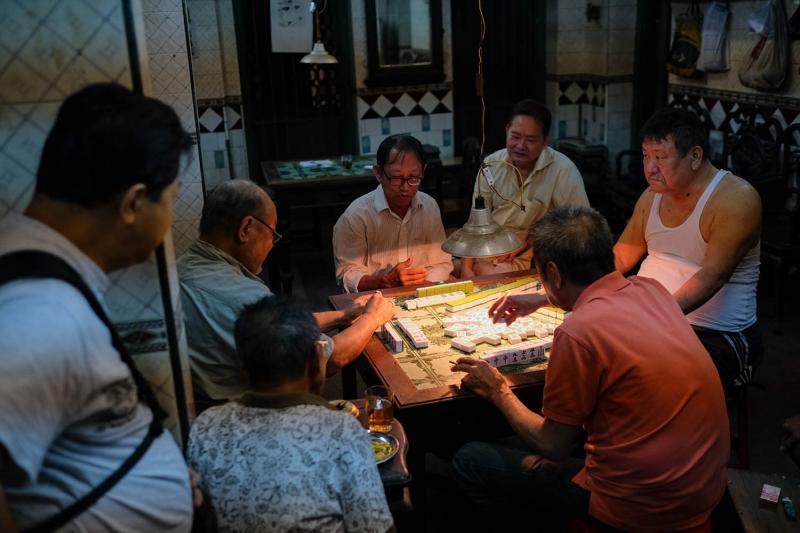
There is no grand pagoda arch in Tiretti Bazaar—of real or dubious authenticity. Amid mom-and-pop shops, tented abodes, dhabas and godowns, a scatter of red buildings is the only visible testament to a once-Chinese enclave. They’re the last five Chinese clubs here.
Traditionally the heart of diasporic Chinese communities everywhere, these clubs were a support network for new arrivals, and ran their own schools, newspapers, and cemeteries. Here, they remain a place where graying men gather for a chess game or a chin-wag, or to pray at elaborate Buddhist shrines, though many of the Chinese here are Christians, owing to the influence of missionary schools nearby. Each club admits members based on common ancestral ties, and is named after its village of origin in China. Except for one.
“Gee Hing means revolutionary club,” Chang Tao Cheng, a semi-retired dentist, tells me over noodles and whiskey. The talk here is that it was founded sometime in the mid-nineteenth century by men united in the aim of overthrowing the Qing dynasty. Unlike other clubs, it’s open to all Chinese. “We Hubeinese used to have our own club, but due to the dearth of members, we’ve come here,” he says.
It’s also the only club that gets a mah-jong game going. As I take pictures, another man approaches me, his forehead in knots. “You’re a Chinese from Malaysia? Surely you have mah-jong at home?”
We do. But what’s interesting to me is the idea of “Chinatown.” Chinese Malaysians form a large minority spread all over the country, and I never grew up in one. In Chinatown, I feel part insider, part interloper—its Chinese-ness simultaneously comforting and alienating. I went to a Mandarin-language primary school and my family still practices the traditional ceremonial rituals, but English is my first language and I grew up on American and British pop culture. It’s not so much the Chinese-ness of Chinatown I’m drawn to, but how it inhabits the city that surrounds it.
Back at the ping-pong game, I listen as the guys flick Hindi at each other along with topspins, backspins, and sidespins. It’s their first language even among Chinese friends, their dialects reserved for the home. To hear them speak is to experience, at once, the specificity and expansiveness of this world.
3.

In 1778, a man popularly known as Tong Atchew founded a sugar mill twenty miles southwest of Kolkata and brought in laborers from China. When he died, they moved on to Tiretti Bazaar.
“We call him Achi Appa (father) and visit his grave to venerate him as India’s first known Chinese settler,” says Lawrence Ho, a member of Nam Soon Club. “He’s why the word for sugar here is the same word for Chinese: chini.”
Like Atchew, most of Kolkata’s Chinese have origins in China’s Guangdong province. They came to India in waves, fleeing China’s successive civil wars and the Japanese invasion during World War II. To make a living, the Hakkas became tanners and shoemakers; the Cantonese, carpenters; the Hubeinese, dentists. They founded laundries, restaurants, and beauty parlors. Perhaps because of the Indian caste system, most of them still hew to these occupations. But they no longer dominate them, and they can no longer count on just Chinese patrons.
At the Sunday market, I see Chinese and Indians both hawking baos and wonton soup to a mixed clientele. Sylvester Huang is out buying breakfast for his aging parents. He was nineteen when he left Kolkata for Taiwan, learned to tend bar and talk to girls, and built a life for himself. When he turned fifty a few years ago, he came back. “I’m a citizen of Taiwan now. Here, I don’t have many friends left, and I can’t have the things I want. But I have no choice.”
He invites me to steamed dumplings from an Indian lady’s corner stand, and another man gives me the lowdown on their bonafides: “Her husband is Chinese, so they’re not bad.” In fact, most of the Chinese in Tiretti Bazaar are intermarried.
As a Chinese Malaysian, I’m at home with the confluence of cultures. I like Manchurian Chicken, served with a sauce of green chilis, garlic, onions, soy sauce, and vinegar in Chinese restaurants here. It’s a staple that’s created not in China, but in India.
“For Indians, authentic Chinese food is too bland. They want the punch of chili and the umami of soy sauce,” says Dominic Lee, who heads a family business manufacturing sauces that have found their way into kitchens across the country. His latest experiment: an alchemy of curry and soy.
4.
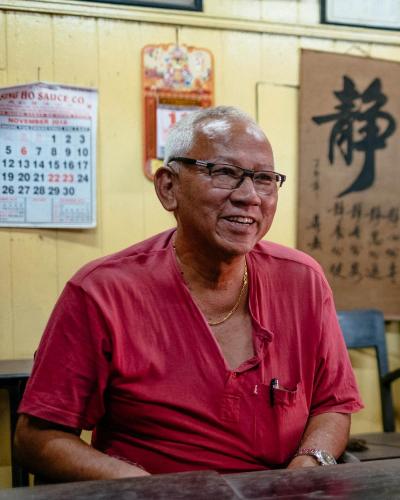
“My grandfather came to India in 1926. He worked hard, and returned to Hubei every year to buy land. When the communist revolution happened, he lost all of it,” says Chang Tao Cheng. That sent the last influx of Chinese into India, and for Tao Cheng’s grandfather and many others, Kolkata became home.
For most of the fifties, India and China maintained amicable relations and Nehru, the first prime minister of India, was one of the first world leaders to recognize Mao’s China. But the countries’ rivalry for regional supremacy soon turned into enmity, made worse when India granted asylum to the Dalai Lama after the Tibetan revolt against Chinese occupation in 1959.
When India and China clashed over their border in 1962, about three thousand Chinese—most from the nearby northeast regions—were rounded up at a desert camp in Rajasthan on suspicion of being communist. Lawrence Ho was eight years old when his family was taken from Assam. They stayed at the camp for two years; others, longer. Ostracized, some felt they had little choice but to return to China on ships the Chinese government dispatched to collect them, though it was no longer their home. Others chose to leave for other countries.
Former internees I speak to broach the subject cautiously. They say that the camp was not a “Nazi camp,” that the Indian government claimed to have put them there for their own safety. But their lives were disrupted. They lost homes, businesses, jobs. Those who were Indian citizens were stripped of some of their citizenship rights. And those who escaped internment were not exempt from restrictions. “In Kolkata, you couldn’t even cross Howrah Bridge without a permit,” Tao Cheng says. Hindi Chini Bhai Bhai (Indians and Chinese are brothers)—a slogan popular in the fifties—was no more.
In the war’s aftermath, many Chinese families had to start over. “When we were released, we were put on a train to Howrah Station and dropped off on a street in Tiretti Bazaar. We had no house, nothing, and lived in Nam Soon Club for two years before my father found a job and moved us out,” says Lawrence.
Despite the return to some semblance of normalcy in recent decades, many Chinese are still reticent about the war. “Why talk about the past? We should look to the future,” Lawrence says.
Someone else recites a Hindi proverb, and translates it for me: “If you’re swimming in the river, don’t disturb the crocodile.”
5.
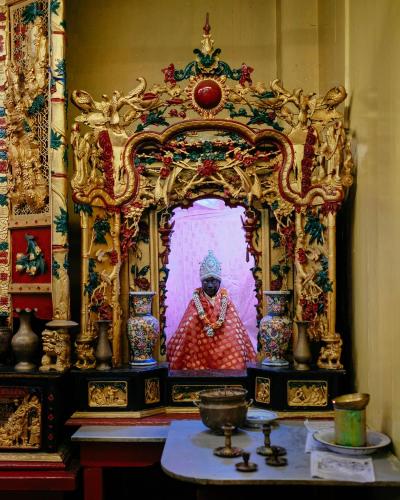
“When I was young, I was unaware of the dynamics of the Chinese community. I only cared about my studies and friends. Only when I moved back from California ten years ago for my parents did I realize how fragmented it is, how closed to outsiders,” Bean Ching Law tells me, as he offers me biscuits and tea in his home. He grew up in Tiretti Bazaar, but now lives with his wife and kids near Tangra.
A few years ago, a critical responsibility was thrust upon his shoulders. “Somehow a realtor found out that we are the last Hokkien family in Kolkata, and approached me about our Hokkien cemetery. He said, ‘We’ll build one thousand apartments there, and half the income will be yours.’ I said, ‘What? But my grandfather and granduncles are buried there.’ I didn’t know what to do.”
So he called a meeting, and about thirty people representing a number of Chinese associations turned up. “I told them, ‘With our population depleting, this concerns all of you. We have about six burial grounds, nine temples, and three schools in all of Kolkata, and we need to unite to protect them instead of keeping to our little groups.’” That was when he founded the Chinese Indian Association, and made the presidents of all the other associations members.
“There was already the Indian Chinese Association, but it focuses more on things like organizing Chinese New Year celebrations,” he says. Any assertions of Chinese identity here tend to be couched in cultural terms, because of the community’s long-standing self-sufficiency and its experience during the border conflict. Bean Ching is more willing to be political—“Not even political, but to enter the mainstream at all,” he corrects me. “I mean, all right, you want to sing and dance. But if you’re in trouble, who do you go to?”
He knows that the Chinese Indians are an insignificant voter base, but believes it would still benefit them to open up. “When I meet with politicians, they always say, ‘You guys never come to us.’ I agree. We always want to rely on ourselves. But we have to partner with the local authorities to preserve Chinatown because it’s also in their interest to protect the city’s cosmopolitan aspect. Otherwise, they will be left with the Hindus and the Muslims who are always fighting.”
6.
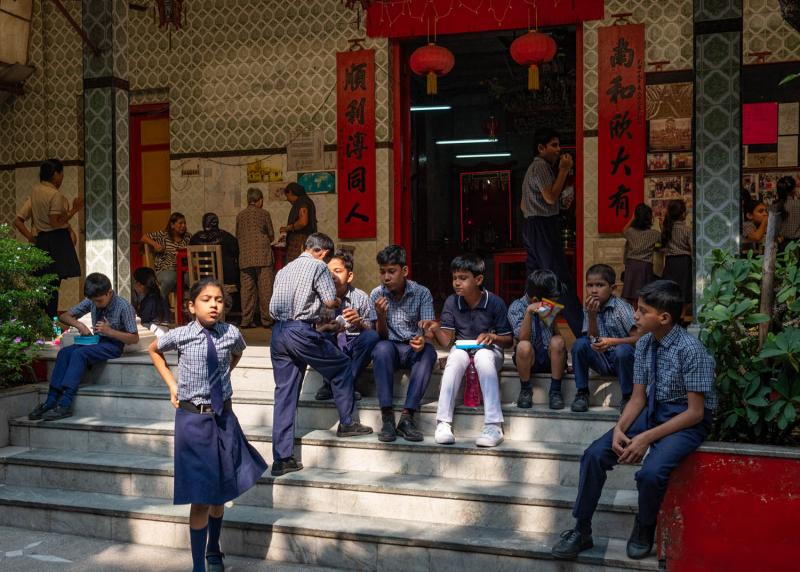
I shimmy along gullies ignited by kaleidoscopic dioramas of Muslim domesticity and industry—goats jostling for space among humans, butchers laboring beneath glistening curtains of raw beef, men and boys washing themselves by the drain—before coming right up against the red doors of Nam Soon Club.
Outside, a company of Muslim men sleep and congregate on a platform built onto an adjacent wall. Inside, a few Chinese old-timers chat about the latest in a quiet temple courtyard. Standing on the threshold, I feel like I’m on the cusp of two separate worlds.

But every weekday from 8:00 A.M. to 1:30 P.M., these two worlds cross. That’s when Muslim children, holding on to their parents’ hands, converge at Nam Soon to attend a school for the underprivileged run by Lily Ho, who is seventy-one, and her daughter, Angelina Chen.
“Miss Lily taught me at a Muslim school I went to as a child. Now, I’m sending my daughter to her,” says Haider Ali, whose parents moved to the area in the fifties from Bihar province. A Chinese elder tells me that the two communities have lived side by side for decades, but where Muslims used to occupy the area’s fringes, they’ve since crowded in.
Chien Kuo was originally a Chinese school, and Lily and Angelina both studied here. “Today, we don’t have a single Chinese student, so the Chinese community stopped giving us donations,” Lily says. But she is dedicated to the school. She had once wanted to become a nun, but ended up marrying an Indian neighbor she grew up with—“only for Indian citizenship.” There was no way around it. Now, she is the last of her family remaining in India.
In 2003, she decided to admit non-Chinese students so the school could survive. “We have about sixty children now, and they are all Muslims from around here. We don’t teach Chinese subjects anymore, but sometimes I sing them Chinese songs.” And though not all parents can afford the school’s fees, Lily manages to make the monthly rent of 8,000 rupees to Nam Soon, which sustains the club.
“Because of this, there is a kind of trust between the Chinese and Muslim communities,” Angelina says. “Nam Soon has been here for over a hundred years, and generations of Muslims are connected to this place.”
7.
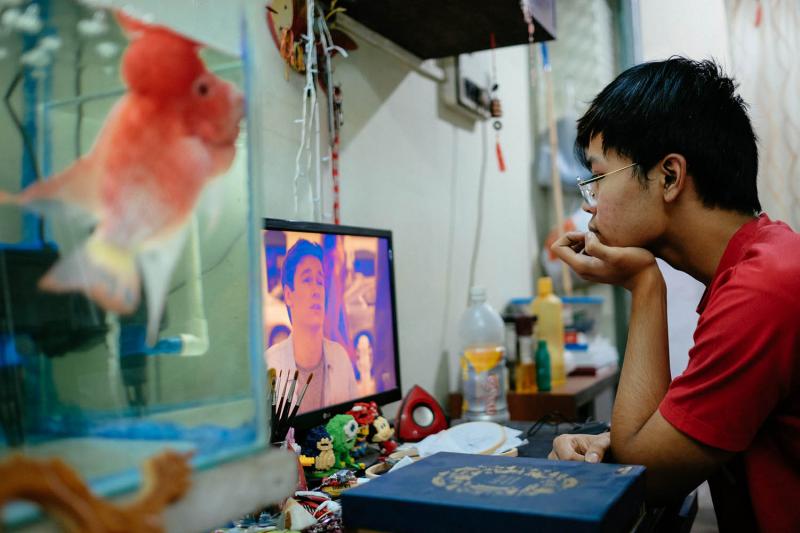
“If you give the younger generation a reason to stay, they will stay,” Trevor Chen says. Most days, he mans Sei Vui Restaurant, right downstairs from where he lives with Stephen and his parents. The restaurant opened a year ago to increase revenue for the Sei Vui Club; many tour groups stop in for lunch. “So, two things, right? You take care of the business, and you take care of your family.”
For others, however, the future isn’t Kolkata. One day, I visit Clayton Chen, a nineteen-year-old who is mixed Indian and Chinese, in the apartment where he lives with his parents. He’s watching American Horror Story on his computer, next to a tank containing two flowerhorns that are supposed to bring good feng shui. He’s just returned from a trip to China sponsored by the Chinese consulate, and the Great Wall and the Forbidden Kingdom had made an impression. But the trip had greater significance.
“Our tour guide took us to the port where our ancestors had boarded ships to come to Kolkata. We also visited the universities, and I plan to apply to study medicine there.” He’s excited about the idea, though he would really rather go to Canada, where all his friends have gone. But for now, China offers the opportunity.
It’s something Bean Ching Law gets behind. “The young should align themselves with the success of China. They have a natural advantage by virtue of their face, their name. But they’re still hesitating. Maybe they think that if they talk about China, people will think, ‘Oh, Chinese, China.’ But the Indians are doing it. And it doesn’t necessarily mean going to China,” he says.
Who knows what will eventually become of Kolkata’s old Chinatown? But for now, those who remain are keeping their heritage alive. And they’re not alone. They’re part of a constellation radiating outward—to Kolkata’s less crowded suburbs, to Mumbai and Bengaluru, to Canada, America, Australia, China, England, Dubai… and when Chinese New Year comes around, that constellation retracts, drawing everyone back together amid dancing lions, whole-hog roasts, and dragon boat races on the Hooghly.
“In the month before, the text messages start coming in,” James Lee, the secretary of Sei Vui Club, tells me. “‘Save me a vest for the lion dance,’ they say. ‘I’m coming back.’”
This dispatch is from #VQRTrueStory, our social-media experiment in nonfiction, which you can follow by visiting us on Instagram: @vqreview.
This project was supported by the National Geographic Society and the Out of Eden Walk.


